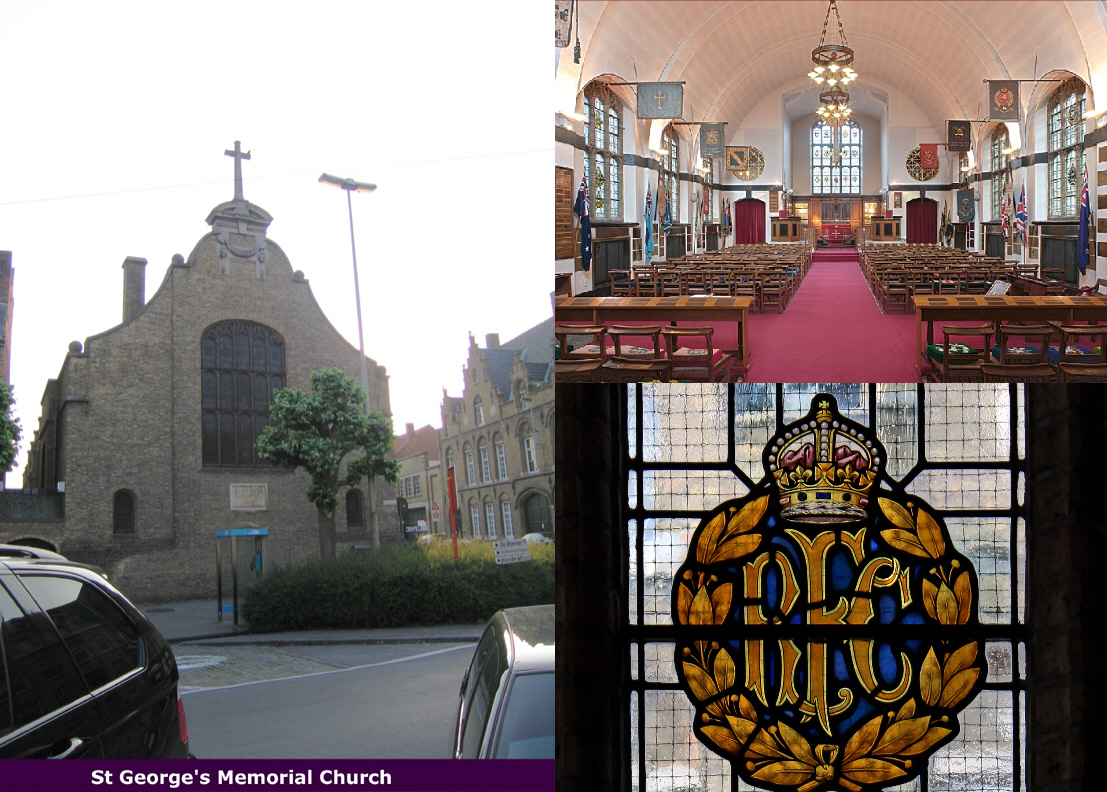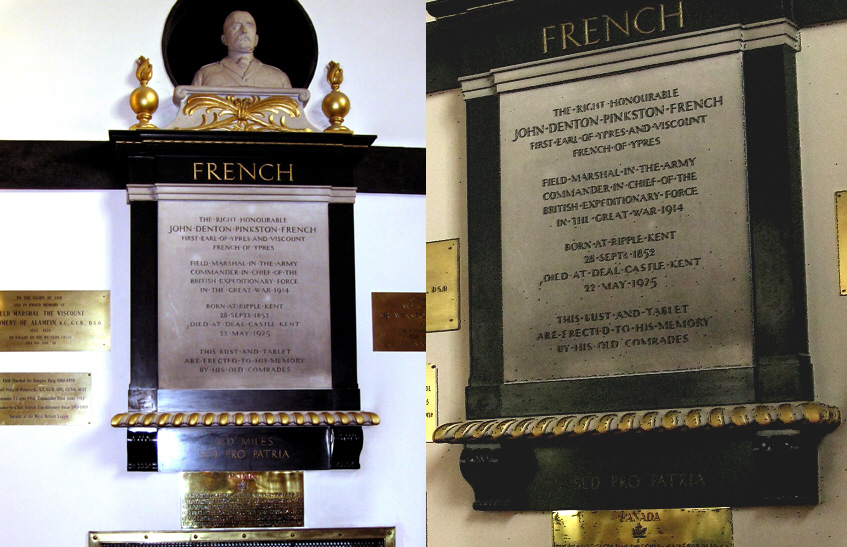St George’s is an Anglican church within the Church of England’s Diocese in Europe. It is one of the must-see stops on a visit to the Ypres Salient.
Click on Image to Expand
Exterior of the Church, Located Across the Street from St. Martin's Cathedral; Interior; Detail, RFC Insignia on Stained Glass Windows
History
St George’s is a pilgrimage church for the many thousands of people who visit the World War One sites of the Ypres Salient battlefields. There is a small resident congregation who live in Ypres and surrounding area of Belgium and Lille(northern France).
The first mention of the building of an Anglican church in Ypres was in August 1919. A few months later an article was published in the Times that an Anglican church was to be built in Ypres to serve both as permanent memorial to the dead but also as a meeting place for the visiting relatives. Opinion on this was however, divided as illustrated by a letter sent to the editor of the Times indicating that an Anglican church would not be appropriate both because many of the soldiers who were killed were not members of the Church of England and also because Belgium was a predominantly Roman Catholic country.
The movement to build such a church only really got underway with the foundation of the Ypres League in 1920. The president was a Canadian, Lieutenant-Colonel Henry Beckles Willson, who had acted as town major of Ieper in 1919 and was also instrumental in the creation of the Imperial War Museum. through the help of the Imperial War Graves Commission a suitable plot of land was found on the corner of the A. Vandenpeereboomplein. The idea to build a school attached to the church had been discussed. The school would be paid for by donations made by Old Etonians and would serve as a memorial to the approximately three hundred and forty pupils who had given their lives in the Ypres Salient.
In the spring of 1927, Blomfield's plans were complete. He had designed a simple space that would be able to accommodate two hundred people. The interior furnishings were to be provided by families of the fallen. Almost every item in the church serves as a permanent memorial to a soldier who gave his life in France and Flanders. There are also memorials to people who died in the Second World War. The school too was simply designed, comprising one classroom and a staff room. The Bishop of Fulham opened the church and the school on 24 March 1929, Palm Sunday.
Field Marshal Sir John French
A striking feature of the church is the emphasis and visibility placed on honoring Sir John French, who was the British commander-in-chief during the first two years of the war, a period covering the first two Battles of Ypres. This, compared to the relative downplaying of the later commander Field Marshal Douglas Haig.
Sources: The St. George's Website; photos by Steve Miller and Tony Langley



I hope to visit Ypres this coming June and travel in my grandfather's footsteps. He lost two close friends in the First Battle of Ypres and perhaps I'll find their names among the millions of others. In my book World War 1 - An Unkept Promise I tell my grandfather's story through his WWI journal. Quite fascinating! It is available on Kindle for those interested.
ReplyDelete